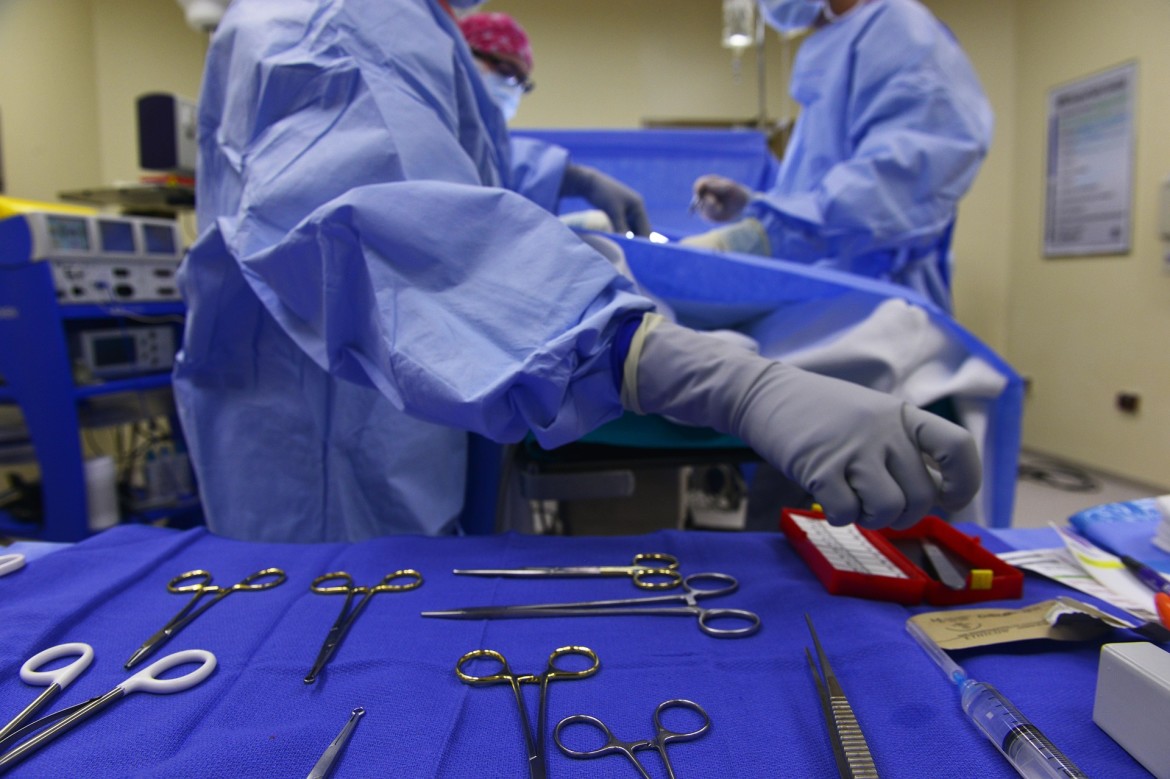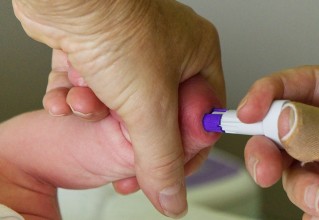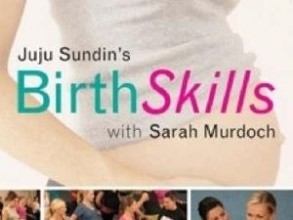What is an episiotomy and why would I need one?
22 Sep, 2019Following on from my previous post on the Medicalisation of Birth - I would like to explore one particular medical intervention and that is episiotomies. As I have probably made clear from my previous posts, I believe in as natural a birth as is possible. Women have been giving birth since long before we were called humans and while modern medicine has made childbirth safer with sanitisation and procedures like caesareans being available if required e.g. for placenta praevia, at some point we as a society lost sight of what a natural process labour is and tried to use technology to control it as much as possible.
In some instances, women would have been better off letting nature take its course and that is where we need to recognise our own limitations, and make risk based informed decisions on when medical intervention is required and when a woman is just fine labouring unassisted.
What is an episiotomy?
An Episiotomy is a surgical cut (about an inch) that is made from the opening of the vagina towards the bum during birth to open up the vagina further. The incision can either be made straight down towards the bum (midline episiotomy) or a medio-lateral incision which is made at a 45 degree angle to the side of the bum, towards one bum cheek. Hope that makes sense.
When is an episiotomy needed?
The procedure was invented by in the 1800s but until 1920 it was only used in emergencies. According to this article on Gizmodo https://www.gizmodo.com.au/2015/06/a-brief-history-of-vaginal-cutting-during-childbirth/ , from the 1920s - 1980s it became a routine preventative procedure used. In a 1920 meeting with the big dogs, this professor in Obstetrics, Joseph DeLee, from Northwestern University professor of obstetrics, argued that labour is an abnormal phenomenon and medical intervention is very much necessary.
Little did Joseph know that he would change the lives of generations of women as they experienced this procedure, called anything from ‘a little snip’ to ‘the unkindest cut’.
An episiotomy may be required for a medical reason, for example the fetal heart-rate is distressed and its not coming out of the vaginal canal. An episiotomy may need to be performed and forceps or ventouse used to pull the baby out. Or it may be that the baby is almost born but there is meconium (fetal poo) present which is a risk to both baby and mother, so the baby needs to be pulled out quickly and there is not enough time for the mother to let the contractions push her baby out.
These are all medical reasons. What has increasingly happened though is that doctors believed that the risk of women tearing during childbirth, having a perineal tear (tearing between vagina and anus) could be mitigated by cutting it instead, and that this would: •reduce blood loss and severe tearing which is harder to suture •prevent incontinence and anal sphincter issues
Both a natural tear and an episiotomy cut will need to be sutured after labour.
What are the risks of having an episiotomy?
•Anal Sphincter Damage (reflex that enables you to poo)
•Painful sex
•Incontinence
•Longer to heal than a natural tear
•Post-partum pain
•Pelvic floor damage
It seems ironic, that the whole point of doing an episiotomy was to reduce the risk of anal and vaginal incontinence and pelvic floor issues. Yet its been seen that episiotomies have caused these things. Personally, I’d rather take my chances with tearing than get an episiotomy and have all these issues anyway.
Study 1 - https://www.ncbi.nlm.nih.gov/pmc/articles/PMC5558305/
This study published in September 2016 looked at long and short term consequences of having an episiotomy. It also said that while there are many publications discouraging the use of episiotomies because of the risks, they are often still routinely performed. It states “Moreover, data as to whether routine episiotomy reduces the incidence of severe obstetric lacerations is lacking, as well as whether episiotomy improves the long-term risks of pelvic floor relaxation, pelvic organ prolapse, urinary incontinence, and dyspareunia remains unclear, and further studies on this issue are still warranted.”
The study basically states that more data is needed to determine whether routine episiotomies are required, as opposed to selective episiotomies only when a medical need arises.
Study 2 - https://www.cochrane.org/CD000081/PREG_selective-versus-routine-use-episiotomy-vaginal-birth
This Cochrane 2017 study analysing the adequacy of previous studies done found that selective use of episiotomies are better as less women suffer perineal trauma. By this they mean that selective use of episiotomies are better than routine use of episiotomies for all women - with routine episiotomies, it is guaranteed that you will be cut, sutured and it will take time to heal, with a risk of perineal trauma. With selective episiotomies, many of these women who do not have an episiotomy may never tear in the first place, and so selective episiotomies reduces the risk of women suffering perineal trauma.
The adequacy of these studies itself is pretty questionable. For example, one study “ reported genital prolapse three years after the birth and there was no clear difference between groups (low-certainty evidence). Other important outcomes relating to long-term effects were not reported in these trials (urinary fistula, rectal fistula, and faecal incontinence).
I truly believe that we are at a point in time where it is important to provide funding to researchers to analyse the risks and benefits of episiotomies vs potential natural tearing during a vaginal birth, and make a conclusive recommendation on when to perform an episiotomy (e.g. what is this selection criteria when it may be required) and a standardised way in which to perform them looking at the risks and benefits of both medio-lateral and median incisions.
Rates of Episiotomies around the world
This article in WebMD looking at episiotomy rates around the world was published in 2005 so a bit old but it states that 1 in 3 women who gave birth vaginally in the US had episiotomies which researchers suggest is way too high. A PHD researcher estimates that there were 1 million unwanted episiotomies performed in the US each year as they are only really required in 10% cases. Interesting.
It also looks at rates in other countries and points out that the variances are not logical. Like caesareans - if episiotomies are performed only when medically necessary, surely there would be similar rates across the world? Nope.
“South and Central America had some of the highest episiotomy rates. According to government figures compiled by the researchers, these rates ranged from 65% in Argentina to close to 100% in Guatemala. Rates in other parts of the world ranged from a low of 9.7% in Sweden to close to 100% in Taiwan. China, Spain, South Africa, and Turkey also reported extremely high episiotomy rates, ranging from 63% to almost 90%.”
Refer to this link for the full article https://www.webmd.com/baby/news/20050826/episiotomy-rates-too-high-say-experts#1
The PHD Researcher in question, Katherine Hartman published a study in May 2005 on episiotomies which found that the benefits that were traditionally ascribed to routine episiotomies do not actually deliver. That is, women are not better off in terms of prevention of fecal and urinary incontinence, pelvic floor, sexual function by having an episiotomy. In fact, outcomes from the episiotomy can be considered worse off as some women would have had lesser injury from natural tearing.
Here’s an excerpt of her study: https://www.ncbi.nlm.nih.gov/pubmed/15870418
There are some more studies out there that look at individual countries rates, for example this one shows that the overall the episiotomy rate in Palestine was 28% but 78% for first time vaginal births for women giving birth from 1 March 2015 to 1 March 2016. I would not want to live in Palestine. https://bmjopen.bmj.com/content/8/7/e021629 The study concludes that educational intervention and updating practices to recommended guidelines may help to decrease this practice.
Similarly this study in Turkey shows that 52% of women who had vaginal births had an episiotomy. https://www.ncbi.nlm.nih.gov/pmc/articles/PMC5776158/ This was published in December 2017 so again a bit more recent.
What about in more ‘Western’ countries? Well I couldn’t find any research articles but living in Melbourne and planning to have my baby here, I had a look at current rates in Australia. According to the Australian Government Institute of Health and Welfare in October 2018, when the website was last updated, 73.2% of women who had their first baby through a vaginal birth and had instruments to assist, had an episiotomy, while 20.8% of women who gave birth to their first baby through a vaginal birth without instruments had an episiotomy. It don’t know exactly what this tells us in dividing it between women who had instruments or not - personally I’d rather just see the total figure. What’s interesting when you look at the data, is that the rates of episiotomy increase with number of annual births in the hospital. Call me a cynic but it makes me think that hospital routines and schedules increase the risk of episiotomy, as busy hospitals with lots of patients are more likely to use an episiotomy to shorten that second stage of labour and have a more ‘efficient’ patient in, patient out process.
Have a look at the data here - it’s pretty great you can slice and dice the data looking at graphs in different areas, although at this point you can’t view it by state. https://www.aihw.gov.au/reports/per/095/ncmi-data-visualisations/contents/labour-birth/b4a
If I have to have an episiotomy - which kind should I get?
I’m not sure on this one, but the gizmodo article suggested that:
“In some cases, instead of redirecting the forces of childbirth to prevent tears in the perineum, episiotomies were concentrating the forces of childbirth and ripping the muscles around the anus apart. Cutting straight down from the vagina towards the anus (the method most common the US) posed the greatest risk for this kind of damage; about half of women on the receiving end of the procedure suffered ongoing gas or faecal incontinence.”
On the other hand, Ina May Gaskin states in her book “Ina May’s Guide to Childbirth” that if you have to have an episiotomy due to the risks present to you or your child such as fetal heart-rate in distress, then you should have one that goes straight down towards the bum because this heals faster.
It seems extremely unfair to me that we need to choose between ongoing gas and faecal incontinence and faster healing time so that we can get back to being as functional as possible. Can we do anything about this? Yes! Let’s do some more research (retrospectively of course) on the risks and benefits of each cut and determine based on evidence which one is better for women.
Here are a few studies on medio-lateral vs midline episiotomies and the risks and benefits if you want to read up on it: •https://www.ncbi.nlm.nih.gov/pmc/articles/PMC2174441/ concludes that “Midline compared to medio-lateral episiotomy resulted in more deep perineal tears. It is more likely deep perineal tears would occur in cases with additional risk factors.” •https://www.ncbi.nlm.nih.gov/pmc/articles/PMC1127405/ says “We still don't know which cut is better or how beneficial the procedure is” •https://emedicine.medscape.com/article/2047173-technique
What should we be doing to reduce the risk of perineal tearing?
We need to support women better in childbirth so that they don’t end up tearing. Let’s not even talk about episiotomies. My vagina shudders at the thought. Episiotomies should only be used when really medically necessary so let’s just focus on the things that could cause you to tear, which is what episiotomies were trying to address in the first place.
A woman may tear because the baby is being born too fast, and pushing against the opening before it’s opened wide enough. Ina May Gaskin suggests using perineal massage during labour and the midwife or mother supporting the baby’s head during labour to stop it pushing through too quickly. Women can easily start practicing perineal massage themselves with olive oil or almond oil from 37 weeks onwards and it’s a great way to make those muscles more flexible and prepare them for labour.
Midwives can also guide their clients to use their breath to control the speed of their labour. Using techniques like visualisation, open breath, and calm breath from hypnobirthing to control the speed of their labour and let their body stretch out ready for the baby in its own time.
And if you do tear - that’s unfortunate. But when I end up giving birth, there is no way I’m letting anyone anywhere near my vagina with a scissors on the off-chance that it might tear. Scissor free zone hey.
Cover Image by Skeeze from Pixabay.
Get The Best Of Sleepy Roo Delivered To Your Inbox
Subscribe to my newsletter and get the latest info on baby sleep! You can unsubscribe at any time.



